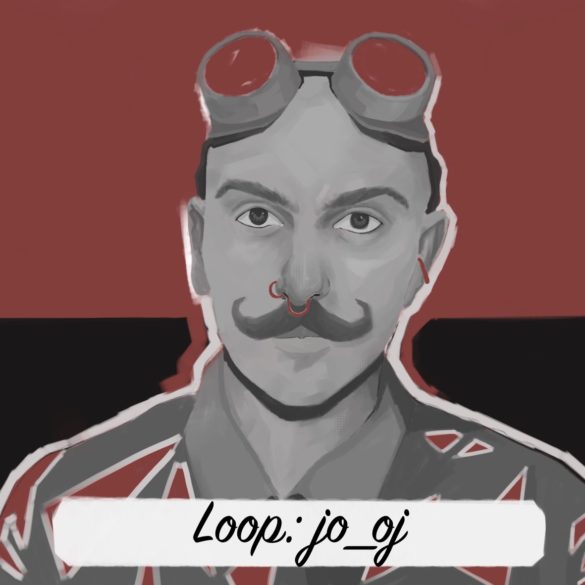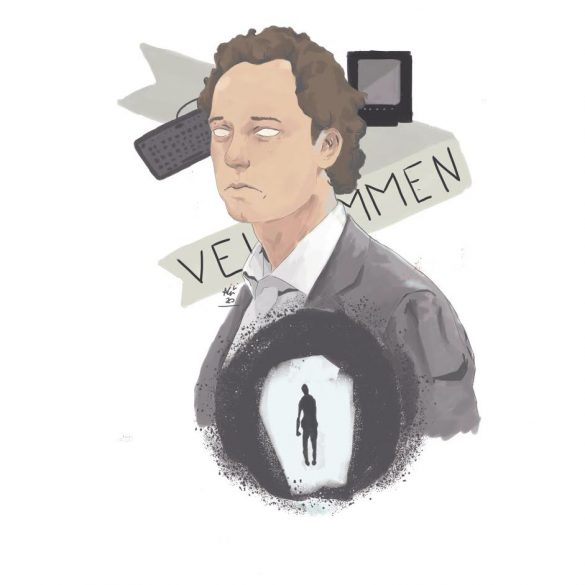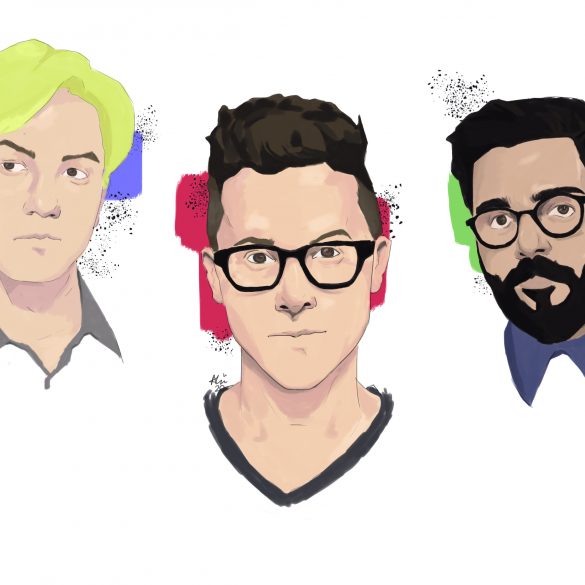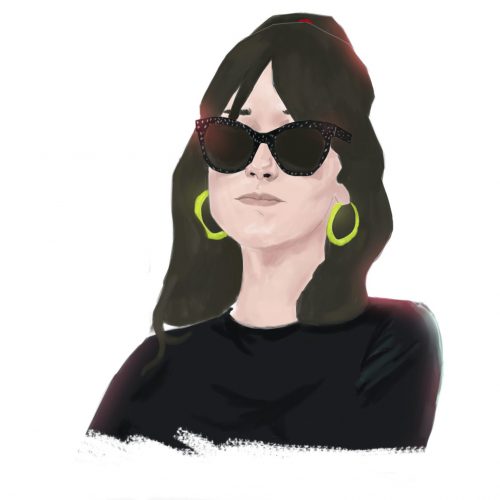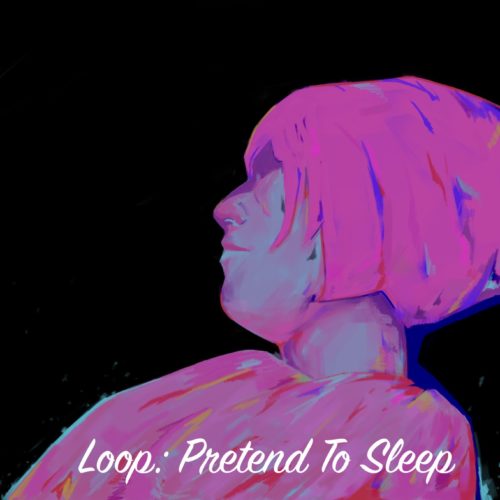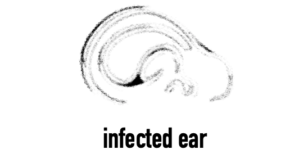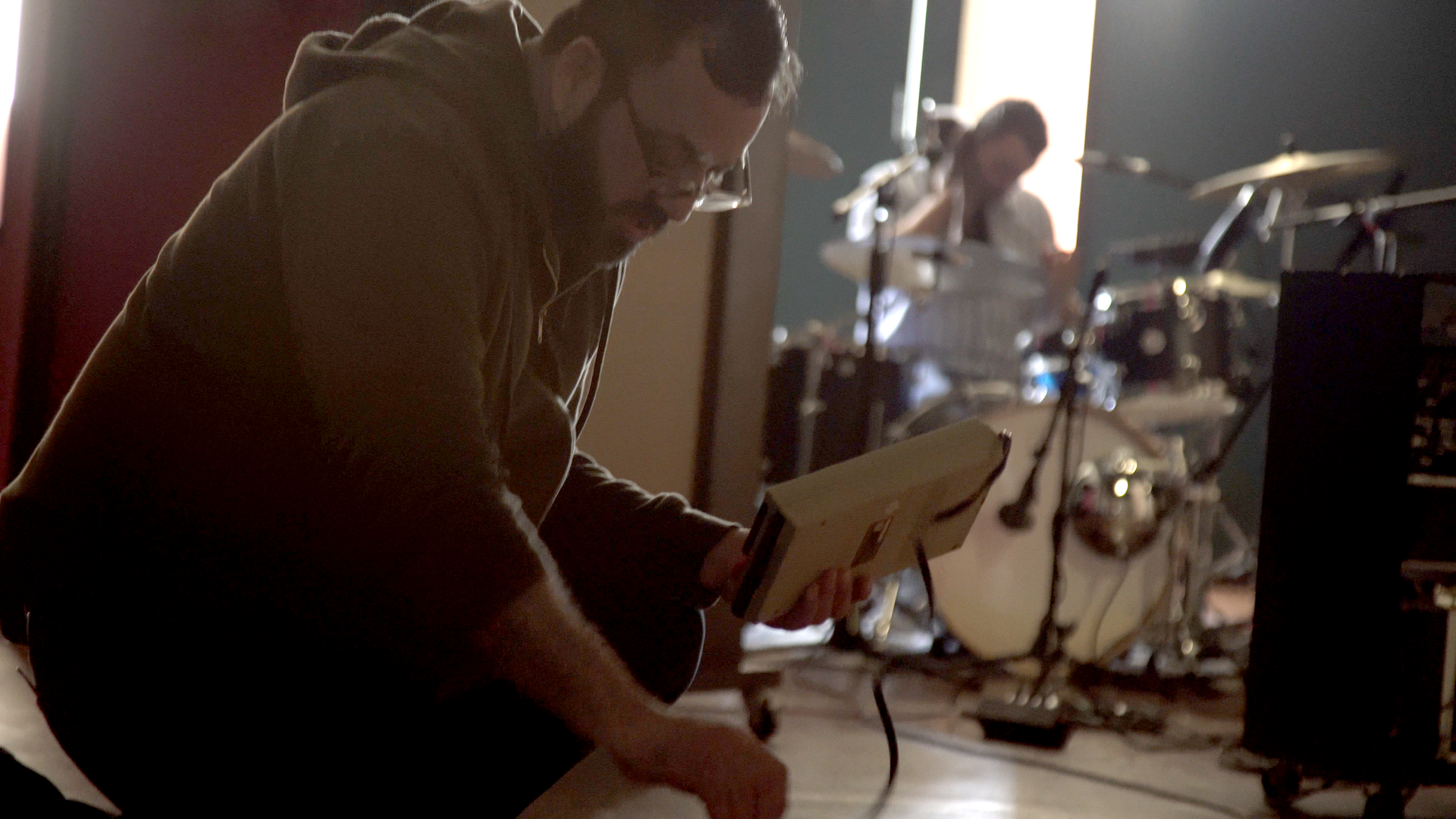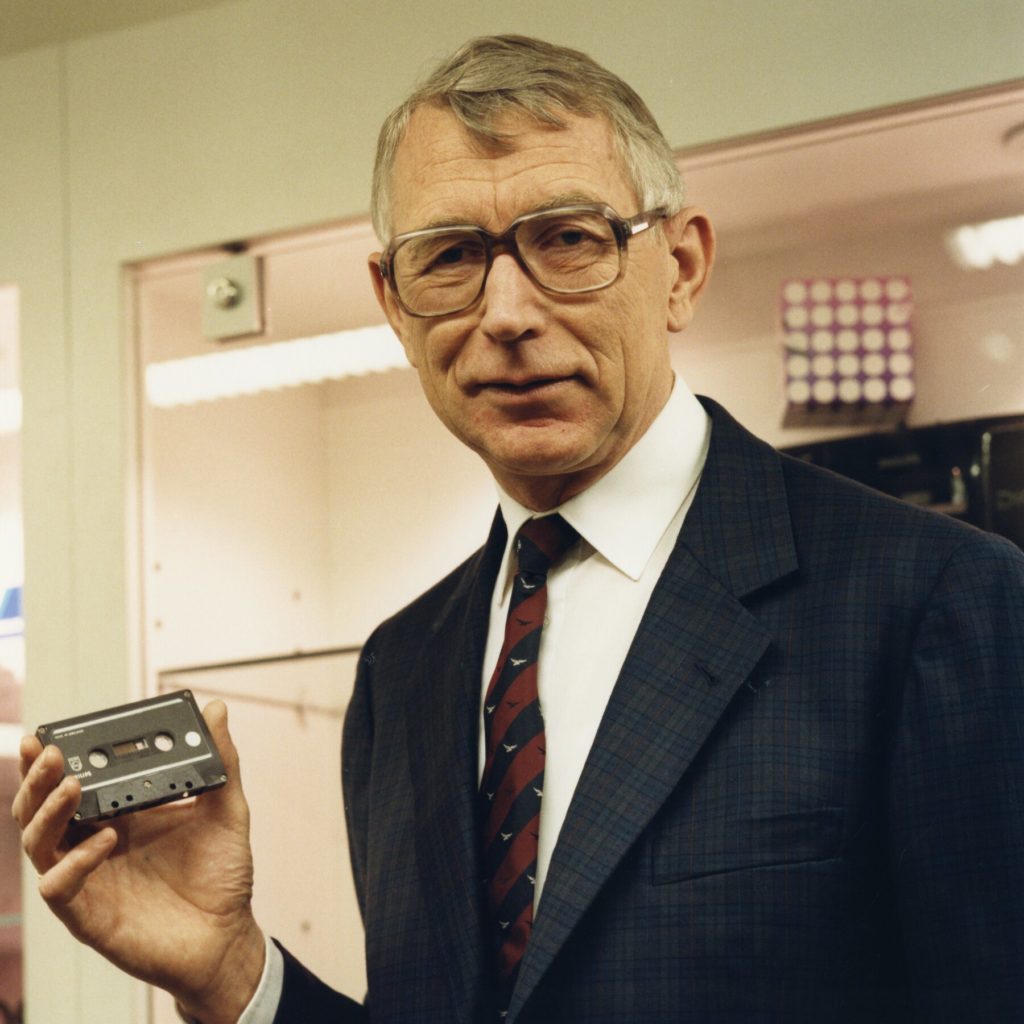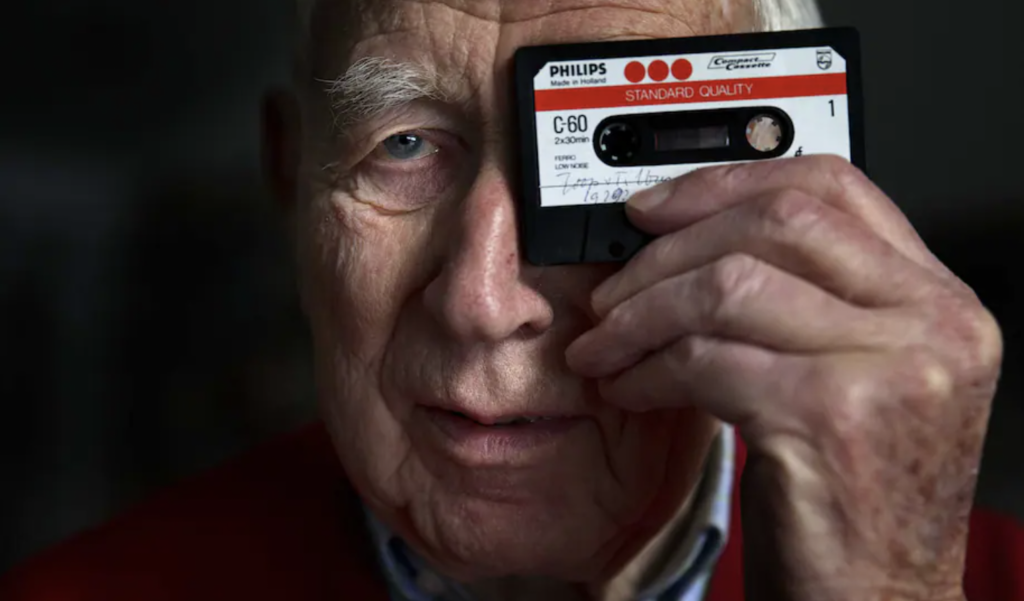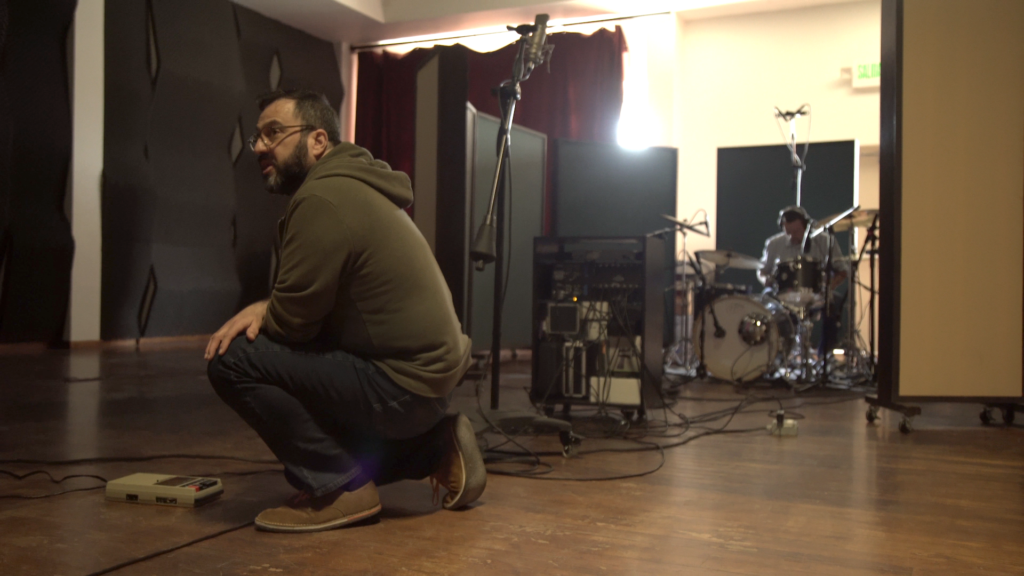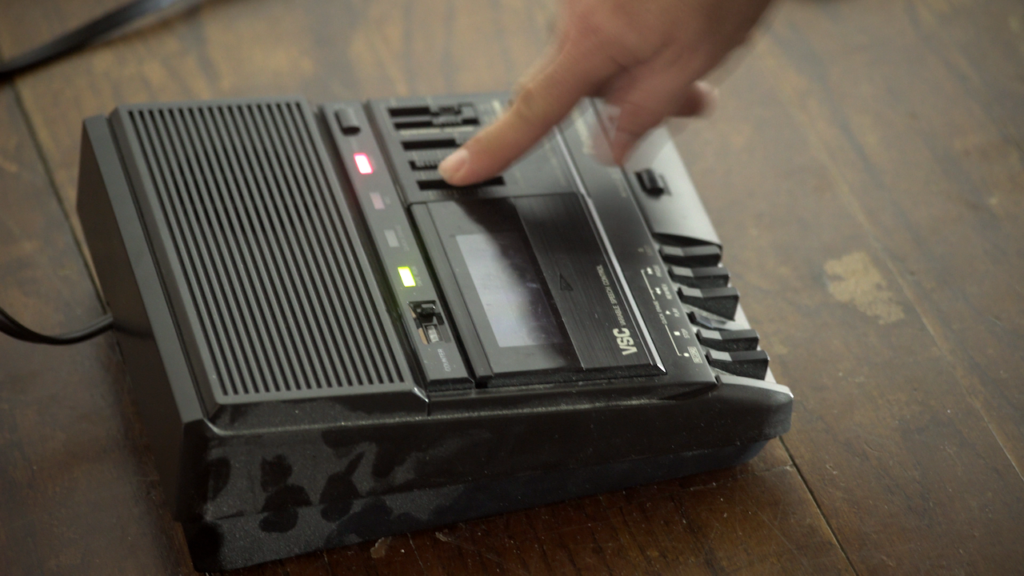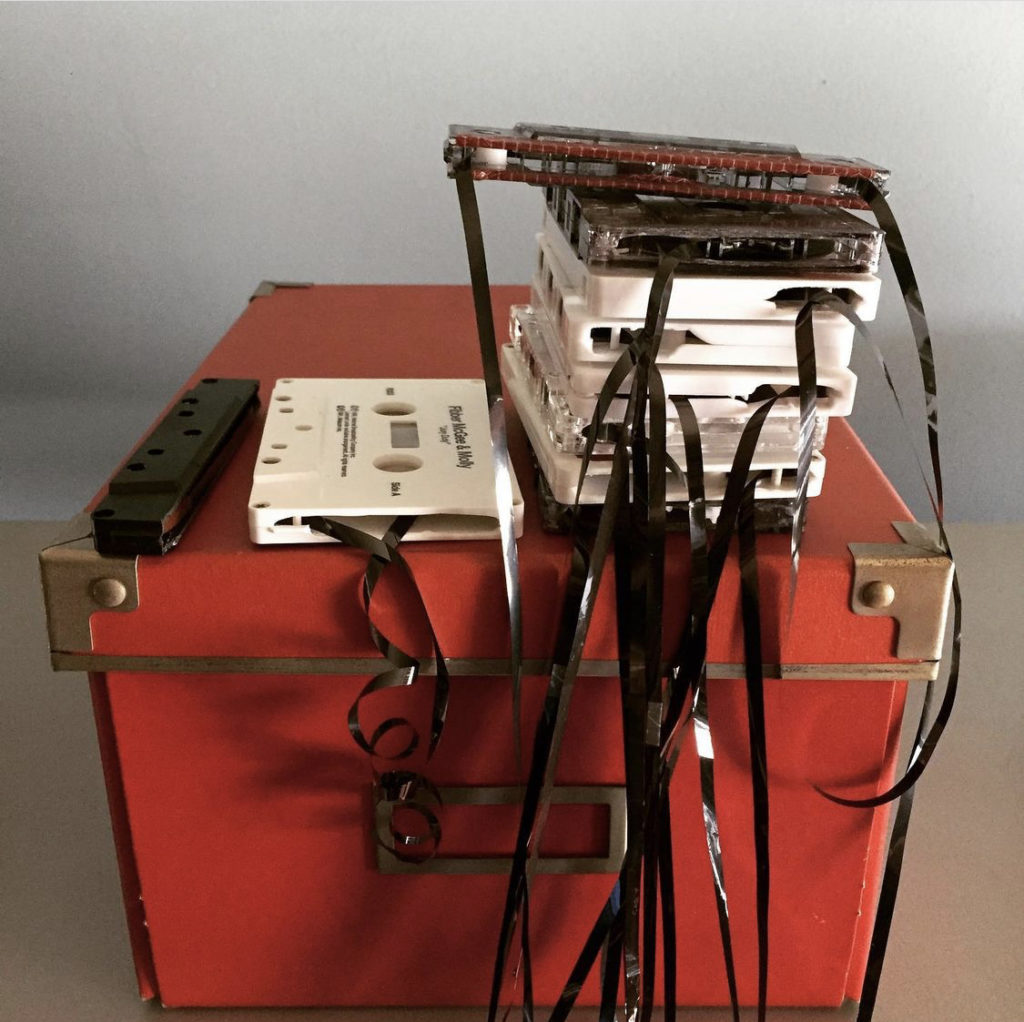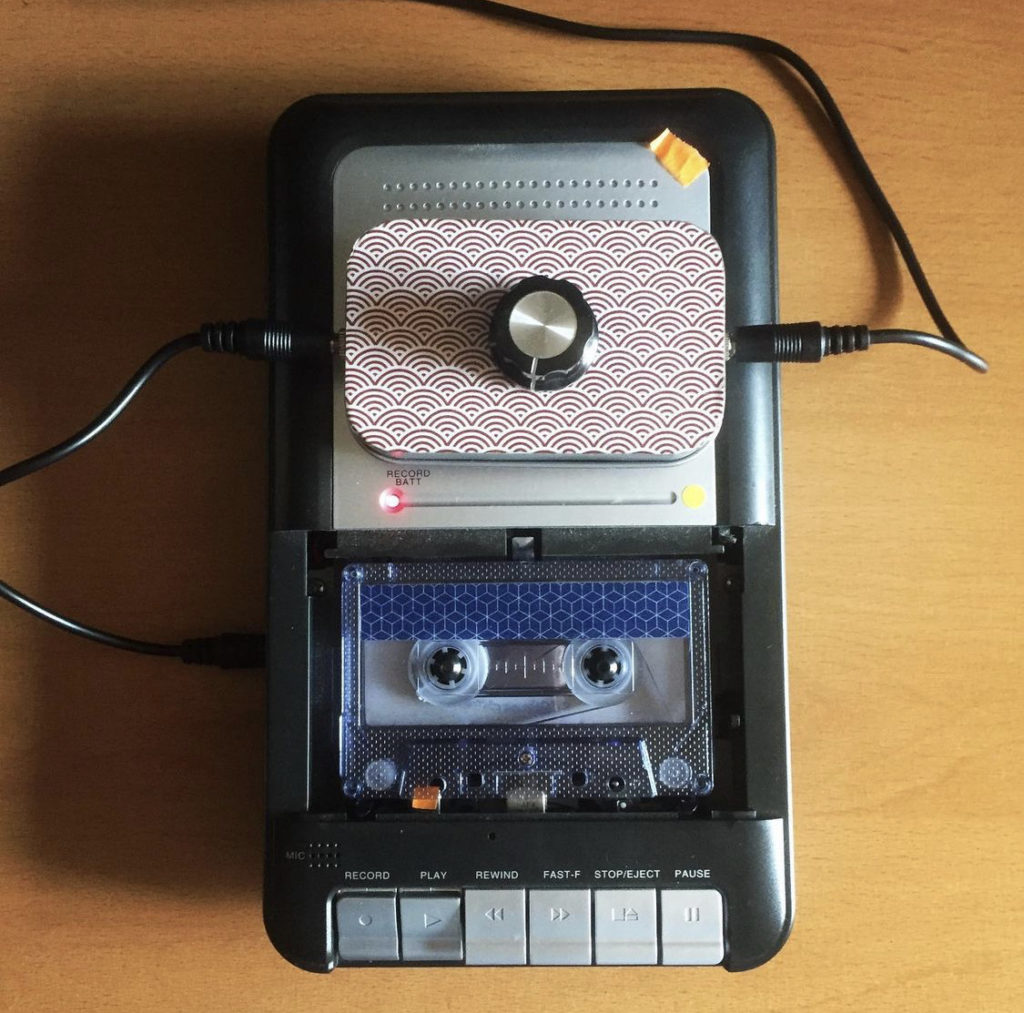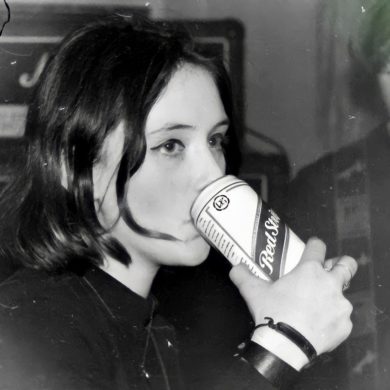Jorge Verdin a.k.a. Tremolo Audio talking about the Dutch engineer and inventor Lou Ottens, best known as the inventor of the cassette tape, and for his work in helping to develop the compact disc.
Jorge, thanks for this interview. Will you introduce yourself to our readers a little bit, please?
I’m primarily a graphic designer but have enjoyed a parallel career in music, first as part of Nortec Collective, then with my Nortec solo project Clorofila, later on with my electronic and ambient project called Tremolo Audio, and more recently, a post-rock group called Observador. I was born in Los Angeles, but grew up in Tijuana, Mexico where thanks to a cool radio station (91X was the fucking bomb back then) and some music-obsessed friends, I came in contact with everything from New Order and Cocteau Twins to Motorhead to European Prog Rock to Brian Eno and various points in between. I moved to Los Angeles to study graphic design at ArtCenter College of Design in Pasadena, and a couple of years into my design career, I started producing music professionally. For the last few years, I’ve been doing mainly tape loop-based pieces which I plan to release under my Tremolo Audio name on my C90 Recordings netlabel.
Thanks to you, we now have a beautiful tribute to Lou Ottens. What would you like to say about him as a designer and a musician?
Thanks for the compliment. To be honest I didn’t know Ottens’ name until he died. When I read the news, it triggered the memory of a good Dutch friend of mine once drunkenly telling me at a party “I’ll have you know my people invented the CD AND the cassette tape!”. All that time I thought he had been joking. So I did the video as a sort of belated thanks for bringing this beautiful invention into my life. Cassettes have been this thread through my musical life: My first hands-on contact with music came through my brothers’ Beatles tapes, these really beautiful Sony cassettes on which he recorded all their albums back to back. Later on, my first attempts at creating music were done on cassettes. Eventually, a friend and I shared a Tascam PortaOne 4 track recorder for years. When I moved over to doing music on computers, I would occasionally use cassettes to create textures or effects, but these last years, a lot of the music I’ve been creating has been based around cassette loops, tape players, and effects, as opposed to creating most of it “in the box”.
Beyond the musical aspect, I really appreciated that you could personalize cassettes, unlike LPs. You could make your own mixes, create your own artwork and even experiment with making visual identities with them, so looking back now, they were my first design exercises. So in many ways, Ottens’ invention was sort of a catalyst for these interests that really formed me as a person, which was kind of weird to think about it that way.
I bet you still have a bunch of cassettes, don’t you?
Oh yeah. Not only do I still have a lot of my original “demo” tapes from the mid-80s, and cassettes of songs I recorded off the radio, and some mixtapes I made, I also have loads of cassettes I’ve bought online, in yard sales or second-hand places, to use some of the cassettes as materials to build my tape loops. Before I do anything with them, I usually wind up listening to the tapes, to see if there’s interesting stuff to sample or work with, so as a result, I’ve been listening to a lot of cassettes. I find that with digital media you can skip tracks or even entire albums too easily, but with cassettes, I have more of a sense of commitment “OK – let’s seen what’s in here…” especially when going through some old unmarked tapes. I recently got some old Memorex tapes with these stereotypical ’80s graphics on them, and I totally expected them to have some type of New Wave or ’80s rock, but one has Eastern European folk music and the other what sounds like ’80s Russian pop. And since there is NO information on them whatsoever, it’s kind of disorienting but cool not having the slightest idea what you are listening to. There’s a sense of discovery that reminds me of when I was finding out about new music.
Besides that, cassettes are useful tools in the studio. Most of the music I’m doing as Tremolo Audio at the moment is based on the simple idea of combining loops of different lengths and have the changing combinations between the musical information on the tapes create the piece. It’s the same idea Brian Eno used on Ambient 1 and I believe some pieces on Ambient 4, except he did it with reel to reel machines. Doing the same with cassettes is much more user-friendly, not to mention affordable. I also used cassette recorders a lot during the recording of the Observador album – to record drums, process guitar loops or keyboard parts, or add texture to song intros and outros. I recently did an ambient remix by recording the separate stems into tape loops and then mixing those down to an old crinkly Memorex tape. Doing that gave the mix an eerie vibe it would have been time-intensive to get with a computer, so not only do I have cassettes, I use them as a tool in the studio on a regular basis.
I think we can comfortably say that the entire Gen X and Gen Y grew up on cassettes. What do they mean to you personally? What kind of memories do they bring them back for you?
I’m definitely not an analog purist or have an “analog is better than digital” attitude. I also enjoy stuff on CDs or digital or LP for that matter, but there are some albums I enjoy listening off the tape I made way back. It probably has a lot to do with the fact that I grew up with cassettes, so for me, there is a built-in sense of nostalgia to cassettes, which bleeds over to the music I make with cassette loops. Sometimes I’ll use really old, low-quality tape and when I record synths or guitars on them, it makes the recording sound automatically old and wobbly, giving it an otherworldly feel. There’s an old Brian Eno quote that the ideal goal as a musician should be to produce music that has the same sense of mystery as the very first music that captivated you and I think cassettes kind of have that mystery almost built-in.
The other aspect I really liked about cassettes, is that passing tapes around helped create a sense of community or friendship. While growing up in Tijuana, my best friends and I would hang out listening to records and tapes I’d make of albums that I borrowed from my more advanced music geek friends. We went from mainly listening to Sabbath, Judas Priest, and Zeppelin, to listening to early Pink Floyd, Tangerine Dream, and King Crimson. When synth-pop and the new wave started happening, we’d listen to Depeche Mode, Tears for Fears, Kate Bush, and the like. The front of the house we’d hang out at was also the spot where all the slightly older rock dudes hung out, listening to metal and drinking beer. They would call us weirdos and fags for listening to the stuff we liked. It was never full-blown bullying, just teenagers being dicks to the younger kids.
One day a friend at school lent me his copy of Motorhead’s “No Sleep ’till Hammersmith” and I was really blown away. It was so over the top and badass, and faster and harder than anything else at the time, that I immediately taped it, headed to my friends’ house with the cassette, and sure enough, all the hesher dudes were already there, drinking gathered around my friend’s older brother’s VW bug which had a really amazing car stereo. I got there and the tape they were listening to was ending. So I said, “Hey, let me play this…” so there’s a lot of snickering and comments like “…Oh, shit… here comes some sort of Duran Duran gayness…” when “Ace of Spades” kicked in really loud. Everyone had this “What the fuck is THIS!?!?” expression on their faces.
I was really excited about being able to share this and those guys were all blown away by this insane shit they’d never heard of before. It was this really cool sort of communal moment.
Not only did they all went batshit for Motorhead, but suddenly I had cred, so they began thinking, “Well… maybe that other stuff this weirdo listens to isn’t that bad…” and started asking me to let them borrow a tape of what they used to consider “faggy music,” or ask me to make them tapes with Bryan Ferry on one side and Tears for Fears on the other. Most of the time they’d give me old played-out Heavy Metal cassette to tape over. Progress! We never really felt seriously bullied by any of them, but we went from being the nerds they didn’t take seriously, to being weird music pushers who expanded their musical horizons but also helped them to stop being judgmental assholes about people who are slightly different from them. I know for a fact that a couple of those dudes follow me on Facebook and I see them “like” some of my weird music posts, or when I talk about the importance of gay artists like Klaus Nomi, Bronski Beat, or Pet Shop Boys. And I would like to believe that my cassettes had something to do with that.
Do you remember the first cassette you have ever bought?
I remember I bought a pack of really low quality tapes called Star. Don’t know what happened to those.
After that, I bought mainly Memorex tapes because those were the cheaper accessible ones. Later on, one of the department stores in Tijuana started carrying Maxell and TDK tapes which I had to save for because those were more expensive.
I once made a tape for a girl with Still Loving You (Scorpions) repeating for 90 mins. Felt cute for a minute but never heard back from her afterward. This is happening in 1993. Do you have a fun story?
Man – that required commitment, but I can see her point, haha.
When I was living in Tijuana back in the ’80s, I was experimenting with a TASCAM 4-track, making up throwaway songs so I could figure out how to record, bounce tracks, use FX, etc. A friend knew a dude who had a radio show at a local university. He told me they were doing a special on the Tijuana music scene, so I made a cassette with five of my weird-ass genre parody tracks for the show. I had a couple of synth-pop tracks, an industrial track, a post-punk Chrome sort of thing, and a really Gothy Cure / 4AD song. I made up 5 different “bands” with different made-up band members. After I made the cassette, I made a cover with an early 20th-century nudie picture I cut out from some magazine and used some Letraset to put the words SEXO MARIGUANA Y ALCOHOL as a title. I thought it looked funny, but I was told that they had to hide the tape from some of the more conservative radio station people, as the “Satanic music” scare was still making the rounds in Mexico. The best thing is that they played all of the songs, even though some had some really obscene lyrics, which were obscured by all the effects I used.
Do you have a favorite cassette design that you used in your tribute or one that reminds you of your youth the most? (Sony CHF for me all the way! Also, Sony EF60. So many good memories!)
I really like the design on the black chassis Sony HF or Chrome tapes with dark gray and green graphics from the ’70s that my brother made his Beatle tapes on, but they didn’t make those anymore when I started buying tapes. To me, that’s what a tape should look like. Having said that, the ones I really enjoyed visually and sonically were Maxell UDXLII. Those looked and sounded badass. Those are the ones I would set aside for the albums I really, really liked.
We are apparently living in a digital age but would you expect a comeback for cassettes just like the vinyl?
It’s a different situation with vinyl because there’s still a lot of money to be made by reissuing music on LP. Classic albums like “Abbey Road” or “Dark Side of the Moon” still account for most album sales and the main difference here is that turntables are still commercially available.
Cassette players and decks went the way of the CD and DVD, and now it’s pretty rare that a home has one. As a result, big music conglomerates don’t have the incentive to create manufacturing facilities to produce and release cassettes —because the profit margin is not high enough for them. So if no one is mass producing tape players, no one is going to begin manufacturing cassettes in large quantities.
As far as I know, consumer tape players and decks have not been manufactured in a while. I’ve seen shoebox tape players, but I’m talking about home stereo or Walkman quality players. I’ve read many times in tape-related forums, people claiming to know insiders at Tascam or Sony who say that manufacturing consumer tape players is not going to happen because the cost is too high and the investment is too risky as a money-making venture.
Then again, a company like Behringer (who people either love or hate), is mining a niche market by investing money into recreating synths that came out in the 1970s or 80s. They really focused on synths that are either expensive and scarce, impossible to find in working condition, or a combination of both. They reproduce the circuits and boards, produce them and make them reasonably priced for a new generation who couldn’t afford them back then. If an electronics company can build a reasonably inexpensive copy of an expensive synth like an ARP 2600 or a MiniMoog in 2021, who’s to say someone can’t figure out a cheap, inexpensive way to produce cassette tapes and players? I’m pretty sure there’s a large group of people like me who would be really happy about that.
